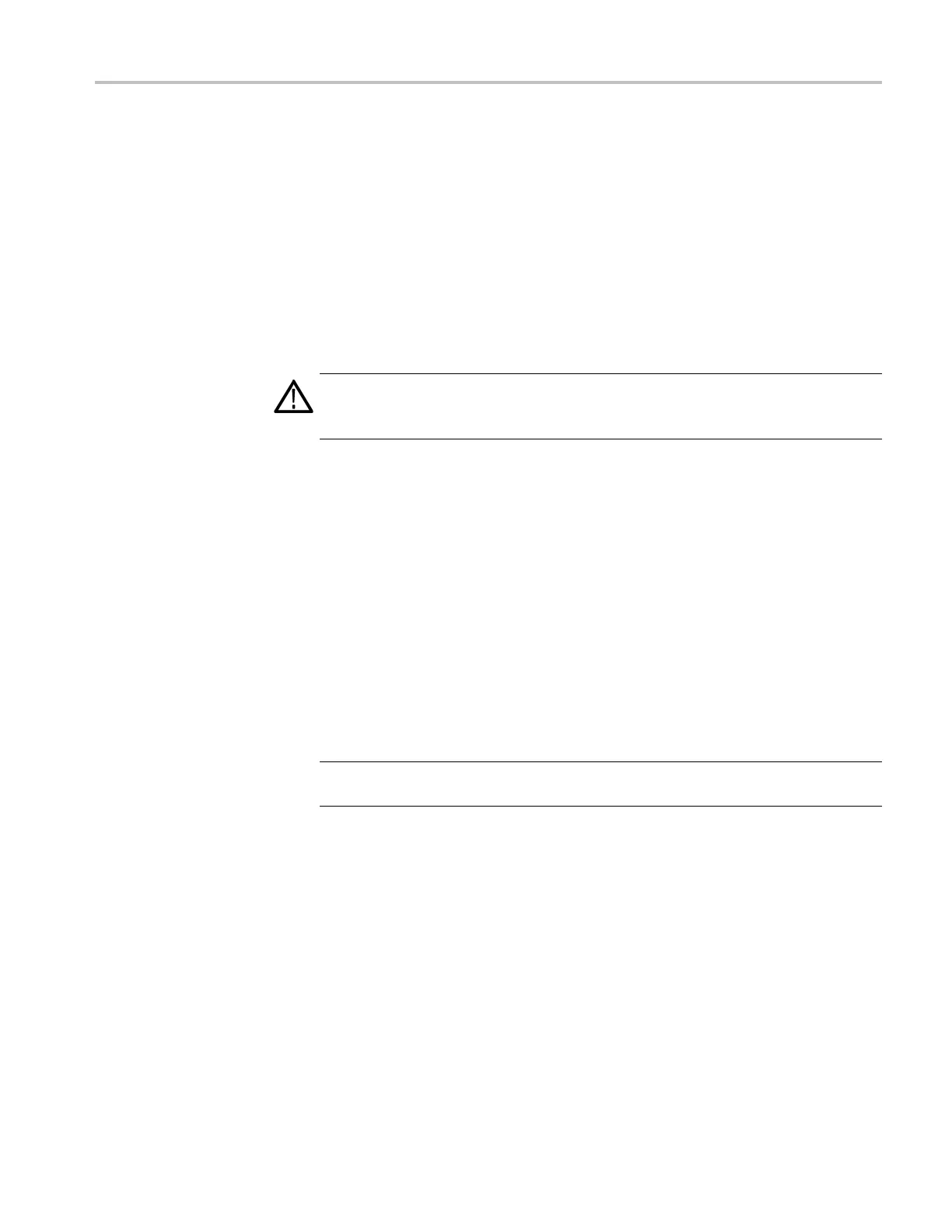Menus
TRAP EVENTS. Se
lect this menu item and press the ENTER button to access the
TRAP EVENTS submenu, which you can use to select which events will trigger
a trap to be sent from the instrument. (See page 83, EVENT submenus.) (See
page 49, Fault and event descriptions.)
PUBLIC COMMUNITY. Select this menu item to view the Public Community string,
which is eff
ectively a password and is required before SNMP commands can read
values from the instrument. The default string value is “public”. Press the ENTER
button to edit the string. Use the left (◄)orright(►) arrow button to select one of
theavailable16characters,andthenusetheup(▲)ordown(▼) arrow button to
edit the selected character. Press the ENTER button to confirm the string s election.
CAUTION. If the public or private community strings are changed from their
default
values, the Web Interface will not operate. (See page 95, How to use
the Web Interface.)
PRIVAT
E COMMUNITY. Select this menu item to view the Private Community
string, which is effectively a password and is required before SNMP commands
can read or write changes into the instrument. The default string value is “private”.
Press the ENTER button to edit the string. Use the left (◄)orright(►) arrow
button to select one of the available 16 characters, and then use the up (▲)or
down (▼) arrow button to edit the selected character. Press the ENTER button to
confi
rm the string selection.
TRAP ADDRESS <1–4>. Select one of the four trap address menu items to view the
SNMP trap address. You can configure up to four IP addresses to which SNMP
traps will be sent w hen error conditions are detected. Use the TRAP EVENTS
submenu to select which events will trigger a trap to be sent from the instrument.
(S
ee page 83, EVENT submenus.)
NOTE. The d efault value for the SNMP trap addresses is all zeroes, which
disables the trap outputs.
To edit a trap a ddress, use the up (▲) or down (▼)arrowbuttontoselectedthe
desired trap address (1–4), and then press the ENTER button. Use the left (◄)or
right (►) arrow button to select one of the address digits, and then use the up (▲)
or down (▼) arrow button to edit the selected address digit. Press the ENTER
button to implement the trap address selection.
ECO8000 Series Automatic Changeover Unit User Manual 75

